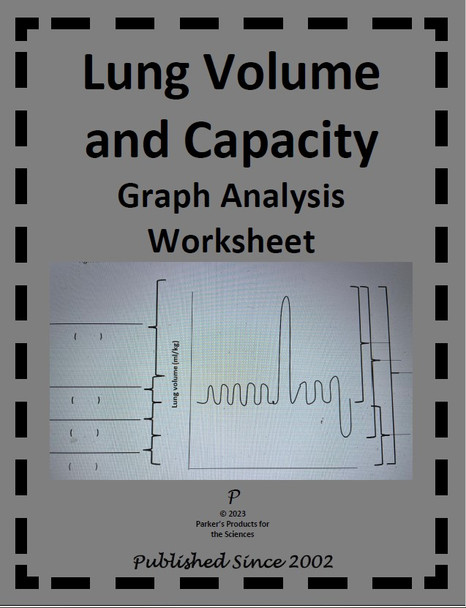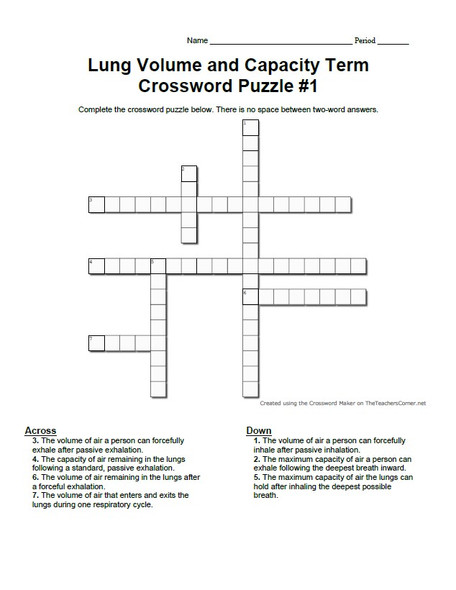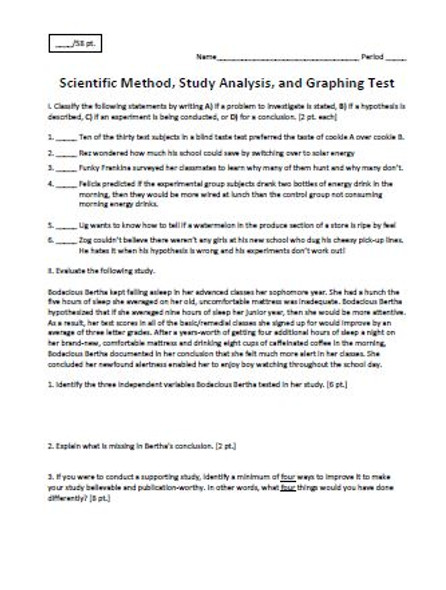Description
Pulmonologists, respiratory therapists, medical professionals, and scientists identify four amounts of air or volumes to monitor homeostasis. The four volumes are expiratory reserve (ERV), inspiratory reserve (IRV), residual (RV), and tidal (TV). Lung capacities arise from the combination of two or more lung volumes. The four capacities are functional residual (FRC), inspiratory (IC), total lung (TLC), and vital (VC).
This full-page lesson will help Human Anatomy and Physiology students define and differentiate the various lung volumes and capacities. In part 1, students will label the bracketed regions of a graph. On the backside for part 2, students will identify the terms that match the clues and record the acronyms of lung volumes that combine to form each capacity.
This lesson includes a full-page key with the answers in bold red font.
I appreciate your interest. I have taught high school science for over twenty-five years. I have published science education kits, games, books, and lessons through various education supply corporations since 2002. I am confident this lesson set will serve you and your students well!
















